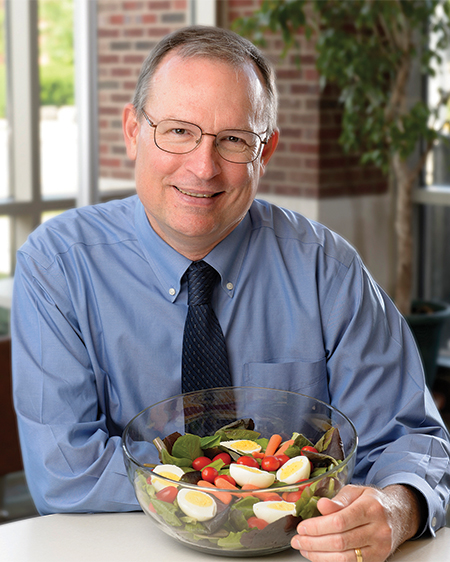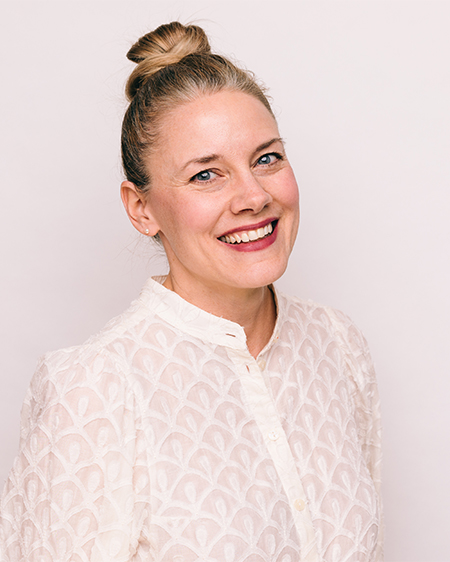Purdue Nutrition Science researchers contribute to U.S. nutrition through three-straight Dietary Guidelines Advisory Committees
Written By: Rebecca Hoffa, rhoffa@purdue.edu

From adding a little bit of broccoli to your plate to deciding to skip that slice of cake, people make countless choices every day to try to eat a healthier diet. The national Dietary Guidelines for Americans offers recommendations every five years for how Americans can be their healthiest selves. Purdue faculty and alumni have played an important role in that guidance.
The guidelines, which began in 1980, are federally mandated by Congress. Prior to each new set of guidelines, the U.S. departments of Health and Human Services and Agriculture charge a committee of scientists with examining the existing research literature and determining health recommendations based on the science.
With its rich history and reputation in research and teaching, Purdue University’s Department of Nutrition Science (NUTR) in the College of Health and Human Sciences has had both a faculty and alumni presence on the three most recent Dietary Guidelines Advisory Committees. Each committee has explored novel questions to inform the scientific basis for the guidelines, which influence school meal programs, nutrition assistance programs and more.
“It is an honor, a privilege and a responsibility,” said Wayne Campbell, professor of nutrition science. “This is the highest, most impactful nutrition committee that you can be on in the United States because it gives a scientific foundation for the government to set the dietary guidelines for the whole nation. Back when I was on the committee (in 2015), it was said that on any given day, the nutrition guidelines impact about 30 million people directly.”
2015: Focusing on dietary patterns

Wayne Campbell
Prior to 2015, the committee was charged with looking at what nutrients Americans should consume and what foods would give them those nutrients. In 2015, the committee Campbell was on was tasked with expanding the picture to look at dietary patterns — or the combinations, quantities and varieties of foods — and their role in a healthy diet.
Perhaps one of the most noteworthy changes for the committee he served on was the finding that cholesterol in egg yolks, which had previously been considered to have negative health effects, was not as harmful as had been previously believed. This led to revised guidance on egg consumption.
“This was what a lot of the news around the country and beyond led with, this change that the dietary guidelines advisory committee was now letting you eat your eggs,” Campbell said with chuckle.
In addition to the groundbreaking egg news, the 2015 committee did extensive work on dietary patterns in the workplace as well as diet in the context of acculturation and immigration.
“I was proud of the work that we did,” Campbell said. “I got involved in a lot of subcommittees that addressed some very forward-looking questions at the time.”
2020: Exploring the full life cycle

Richard Mattes
The 2020 Dietary Guidelines Advisory Committee was unique in that its 20-member committee included one current NUTR distinguished professor, Richard Mattes; two former NUTR faculty members who were on the Purdue faculty at the committee’s inception; one NUTR alumna; and one NUTR adjunct faculty member.
“The 2020 committee when it was first constituted had three Purdue faculty, which is astounding,” Mattes said. “There are top-quality people in this department. The committee seeks experts; they seek the people they think have the capability to see the big picture and to think critically about the science and be objective. I think it speaks well for the caliber of the talent here at the university.”
While the 2015 committee introduced looking at dietary patterns, one of the most significant changes made by the committee Mattes served on was to extend the reach of the guidelines to include even the youngest members of society.
“A unique dimension of the 2020 committee was that it was the first time that the science was reviewed for the full life cycle,” Mattes said. “Prior to that, it started at age 2, and with the 2020 committee, it went down through pregnancy and infancy. It expanded the scope of the recommendations.”
The 2020 committee also investigated snacking as it contributes eating frequency with important health implications. Mattes, who had quite a bit of research experience with beverages and their effect on body weight, also worked with the committee to look at food form and the contributions of beverages to health outcomes.
Mattes said although the rigorous process doesn’t come with any direct benefits, serving on the committee often identifies the members as experts in their fields, offering unique future opportunities to make a difference in the nutrition field through seminars, papers, research collaborations and more.
“You have the option to have a bigger impact than just the work you did on the committee,” Mattes said.
2025: Looking toward the future

Heather Eicher-Miller
Heather Eicher-Miller, professor of nutrition science, is the most recent addition to the dietary guidelines committee, currently working on preparing the 2025 Dietary Guidelines for Americans. The committee’s work, which takes two years, is halfway through, and Eicher-Miller said she has enjoyed seeing the dedication and work put into the guidelines and being able to contribute to it.
“I feel very fortunate to get to know all the other people who are on the committee and also work with really excellent government teams that have been doing this for a long time, and they have been extraordinary in their support of the committee,” Eicher-Miller said. “It’s really fascinating to learn about those opportunities and then to be able to make my students aware of those jobs.”
While nothing can be shared about topics being explored by the committee, Eicher-Miller noted that this update to the guidelines will take a health equity approach to help make the guidance relevant to Americans with diverse race, ethnic and socioeconomic backgrounds. Her research expertise in dietary patterning and analysis with a focus on those living in food insecure situations has served her well as co-chair of the Food Pattern Modeling and Data Analysis subcommittee.
Ultimately, Eicher-Miller explained that serving on the prestigious committee offers Purdue researchers the chance to have a direct impact on nutrition, both now and in the future.
“It gives our department and institution a chance to contribute to what will happen in the next five years and the next five years after that,” Eicher-Miller said.
Discover more from News | College of Health and Human Sciences
Subscribe to get the latest posts sent to your email.